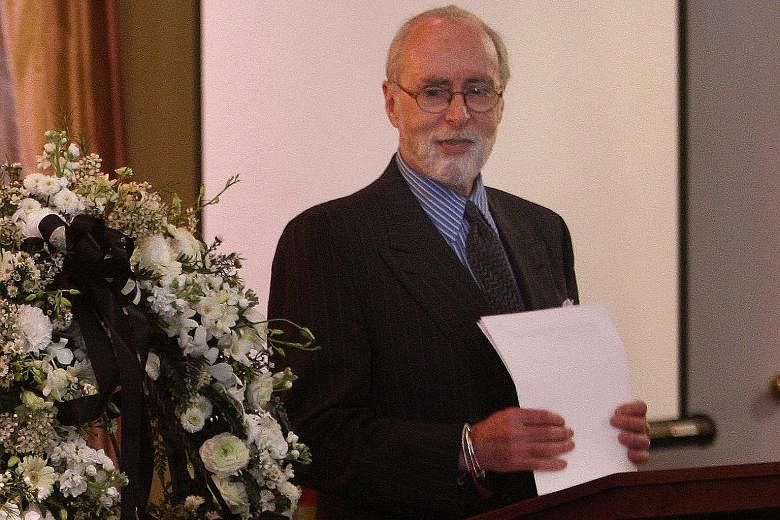NEW YORK • Mr Sydney Schanberg, a correspondent for The New York Times who won a Pulitzer Prize for covering Cambodia's fall to the Khmer Rouge in 1975 and inspired the film The Killing Fields with the story of his Cambodian colleague's survival during the genocide of millions, died on Saturday in Poughkeepsie, New York.
He was 82 and had suffered a heart attack last Tuesday.
Mr Schanberg was born in Clinton, Massachusetts, on Jan 17, 1934. With a Harvard degree, he joined the newspaper in 1959 as a copy boy and became a staff reporter in 1960, covering general assignments and government agencies.
He joined the newspaper's foreign staff in 1969 and, as the South- east Asia correspondent from 1973 to 1975, he focused increasingly on the Khmer Rouge insurgency in Cambodia.
In the spring of 1975, as Pol Pot's communist guerillas closed in on the capital, Phnom Penh, after five years of civil war, Mr Schanberg and his assistant Dith Pran refused to heed directives to evacuate the city, remaining behind as nearly all Western reporters, diplomats and senior officials of Cambodia's American-backed Lon Nol government fled for their lives.
Mr Schanberg and Mr Dith were seized and threatened with death. Mr Dith's pleas saved Mr Schanberg, and the two journalists took refuge in the French Embassy compound. Later, Mr Dith and other Cambodians were expelled from the compound and forced to join an exodus into the countryside.
Two weeks after his capture, Mr Schanberg and other foreigners were evacuated to neighbouring Thailand, where he filed the first account of the fall and emptying of Phnom Penh.
He returned to New York and was showered with awards, including the Pulitzer, which he said he shared with Mr Dith. He also became a metropolitan editor and columnist at The New York Times.
In 1978, Vietnam invaded Cambodia and replaced Pol Pot with a client regime. Mr Dith escaped across the border to Thailand in 1979 and was soon reunited with Mr Schanberg.
After moving Mr Dith and his family to New York and helping him obtain a job as a photographer at The New York Times, Mr Schanberg wrote The Death And Life Of Dith Pran, a 1980 cover article for The New York Times Magazine that was later published as a book.
The story became the basis for Roland Joffe's 1984 movie, The Killing Fields.
Besides the Pulitzer Prize, Mr Schanberg also won two George Polk Memorial awards, two Overseas Press Club awards and Sigma Delta Chi's distinguished journalism prize.
NEW YORK TIMES

